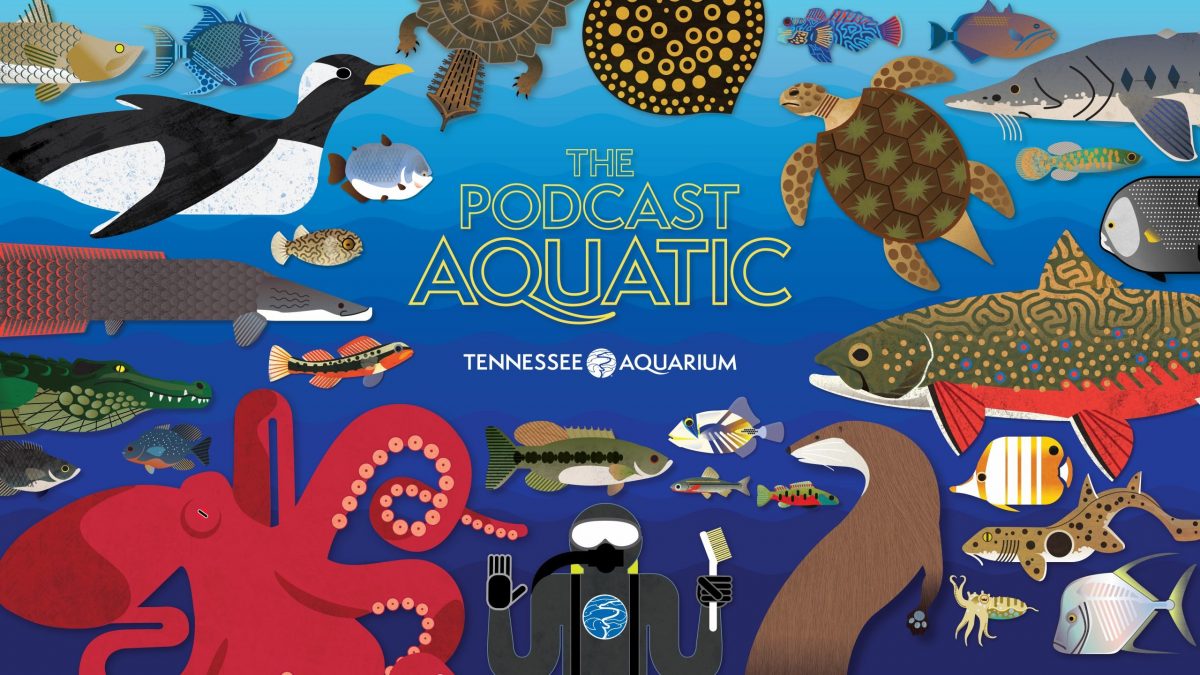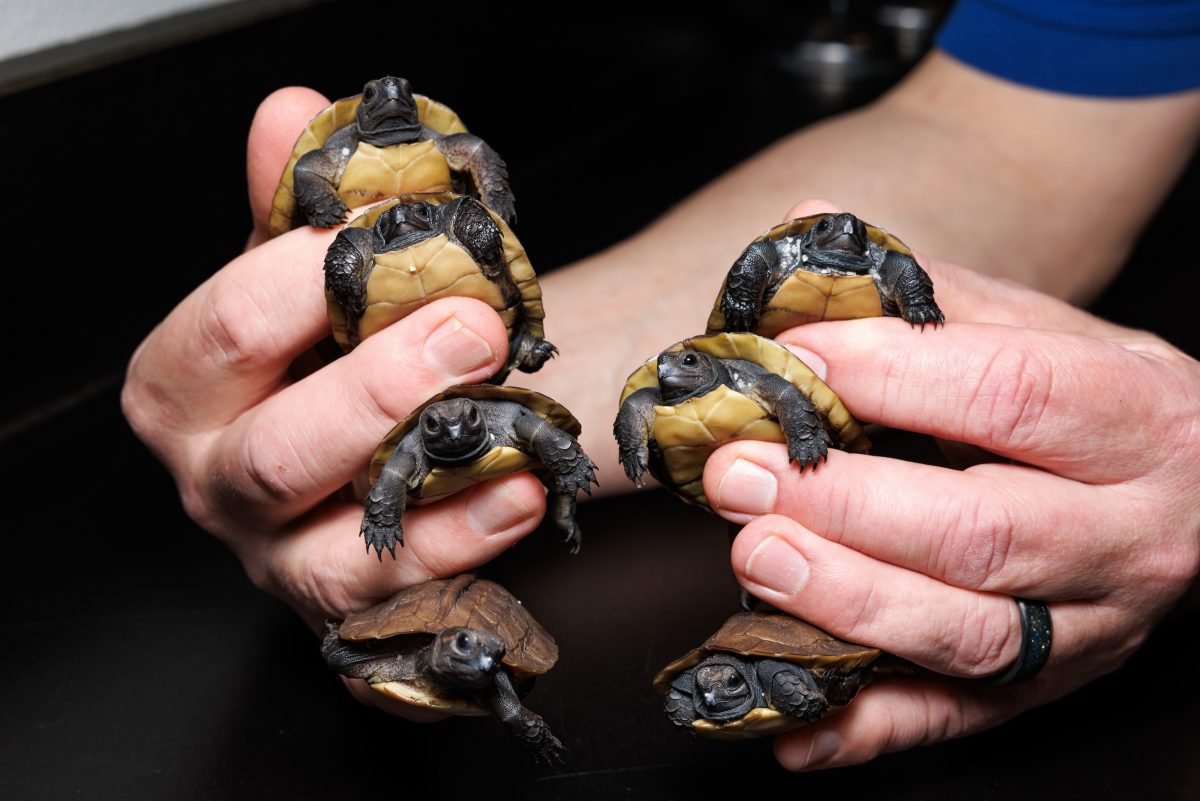Snakes are all around us in the Southeast. They burrow below ground, slither through leaf litter on the forest floor and climb along vines and branches in search of food and warm resting places.
These misunderstood and often-maligned reptiles are an essential part of the ecosystem that surrounds us, but myths and misinformation about their nature are rampant. Many people are uncomfortable or even afraid of snakes based on misconceptions about their nature.
Fortunately, snakes’ reputation as dangerous or scary is underserved, and they serve a vital role in nature as both predator and prey.
If the thought of a snake gives you the willies or raises the hairs on the back of your neck, read on to learn why you have little to fear from snakes but a whole lot for which to thank them.
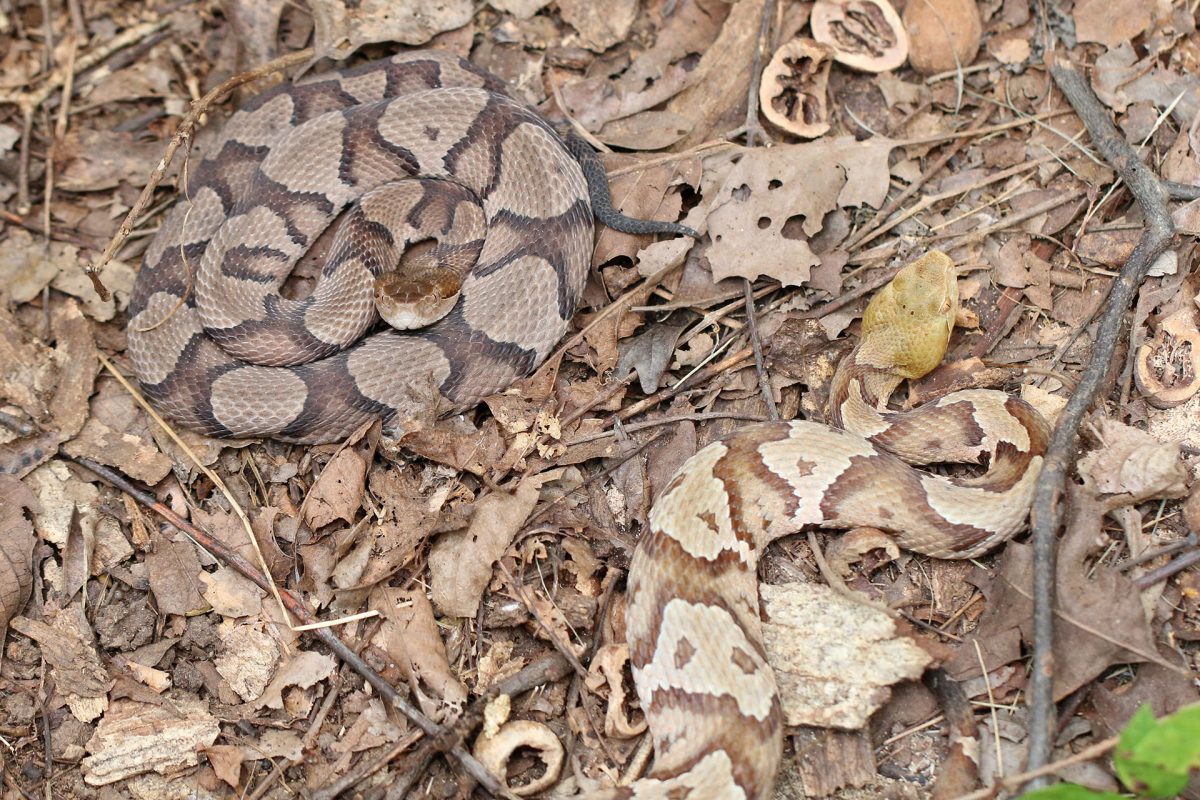
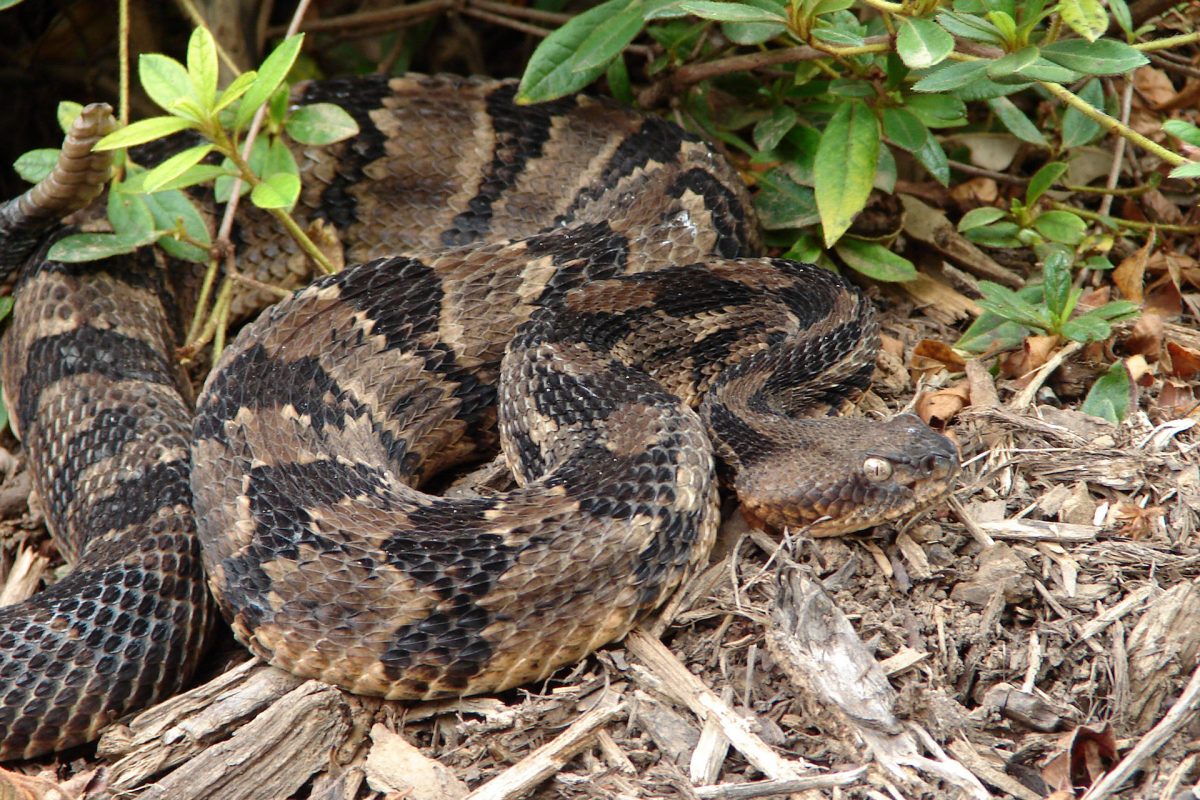
Left: Two colorations of venomous Northern Copperheads (Agkistrodon contortrix). Right: Venomous Timber Rattlesnake (Crotalus horridus). Photos by Curator of Forests Kevin Calhoon.
Are snakes dangerous?
Though it might be alarming to encounter one of these slithering reptiles around your home or while hiking, there’s no cause for worry. Snakes want to be left alone by humans and larger potential predators, and you’re in no danger if you give them their space.
In fact, the vast majority of snake species are harmless. There are 3,900 species of snake in the world, but of these, only 660 are venomous.
Of the world’s venomous snakes, only 200 species are considered harmful to humans. The toxins of the other 460 species are too weak to be dangerous to humans.
In Tennessee, we have 32 species of snake. Only four of these – Northern Copperheads, Cottonmouths, Pygmy Rattlesnakes and Timber Rattlesnakes – possess venom that is harmful to humans.
Some common traits considered to be hallmarks of venomous snakes, such as triangular-shaped heads, are incorrect. Many non-venomous snakes flatten their heads when they feel threatened, and you can’t rely on head shape alone to determine if a snake is venomous.
All venomous snakes in Tennessee are pit vipers, which means they share a few common traits, but these traits are not universal to all venomous snakes. All pit vipers native to Tennessee possess vertical pupils and heat-sensing pits below their eyes, near their snout.
Though their bites have the potential to be harmful, even venomous snakes want to be left alone by humans. Biting is their last line of defense when threatened, and they would prefer to go on their way unbothered.
You may have even heard a persistent myth that Cottonmouths will chase humans, but they, like other venomous snakes, are much more interested in potential prey items like mice and chipmunks than a human that they cannot eat.
Venomous animals deliver toxins through bites or stings. Poisonous animals deliver toxins when they are eaten, or the toxins are inhaled or absorbed through the skin.
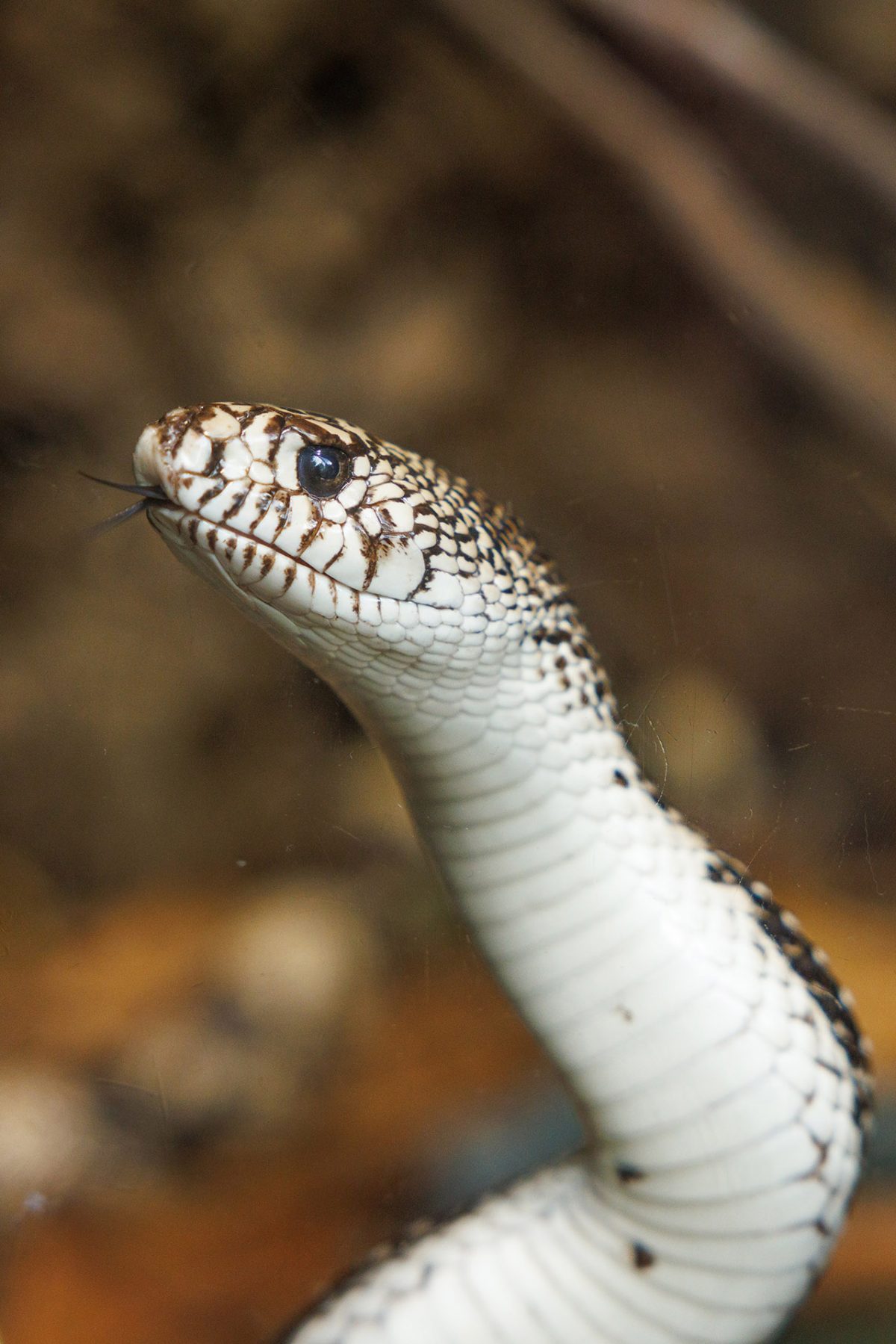
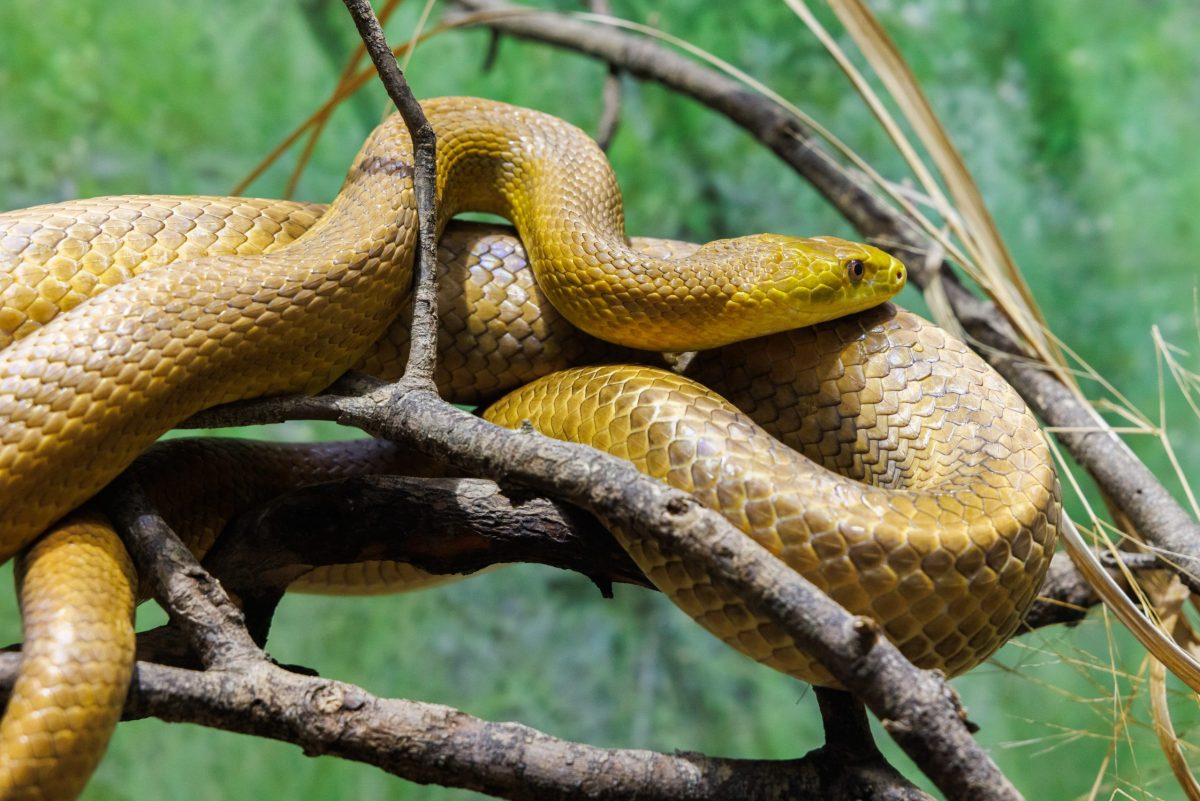
Left: Northern Pine Snake (Pituophis melanoleucus). Right: Eastern Rat Snake (Pantherophis alleghaniensis).
What to do if you find a snake
Your chances of encountering a snake while hiking or working in your yard increase from spring to fall as they take advantage of warm temperatures to search for prey. If you see a snake, a few guidelines will help you stay safe, especially if you’re unfamiliar with the snakes in your area.
Admire your scaled visitor from a distance, especially if you can’t identify the snake species. If you’re interested in learning about the snake species around you, you can find identification guide books or snake identification groups on various social media channels.
Don’t pick up or handle a wild snake. Even non-venomous snakes can bite if handled, and many snakes will release an unpleasant musk to ward off predators.
Allow the snake to go on its way without interruption. If you’re concerned about a snake in your yard or property, you can encourage it to move along with a gentle spray from your garden hose. Call a reputable wildlife expert if the snake is venomous and you would like it relocated.
Do not kill the snake. It is illegal to kill venomous and non-venomous snakes in Tennessee, and they share similar protections in many other states. If the snake is venomous, you’re putting yourself at risk by attempting to harm it.
Trying to kill a snake dramatically increases your chances of being bitten, and venomous snakes can inject their venom even after death. The nerves of recently deceased snakes continue to function, and the muscles of dead snakes can carry out reflexive actions, like bites, even after death.
That being said, snakebites are extremely rare, with as few as 7,000 annually in the United States, according to the University of Florida’s Department of Wildlife Ecology & Conservation. Snakebite fatalities are rarer still. Only one in 50 million people, or approximately five a year, die from snakebites in the U.S.
Still, you can take a few steps for added safety. Don’t hike in flip-flops or open-toed sandals, and don’t walk around barefoot at night during warmer months. Look carefully where you’re stepping while hiking and look before sitting down on the ground.
If you’re gardening, wear gloves and look where you’re putting your hands.
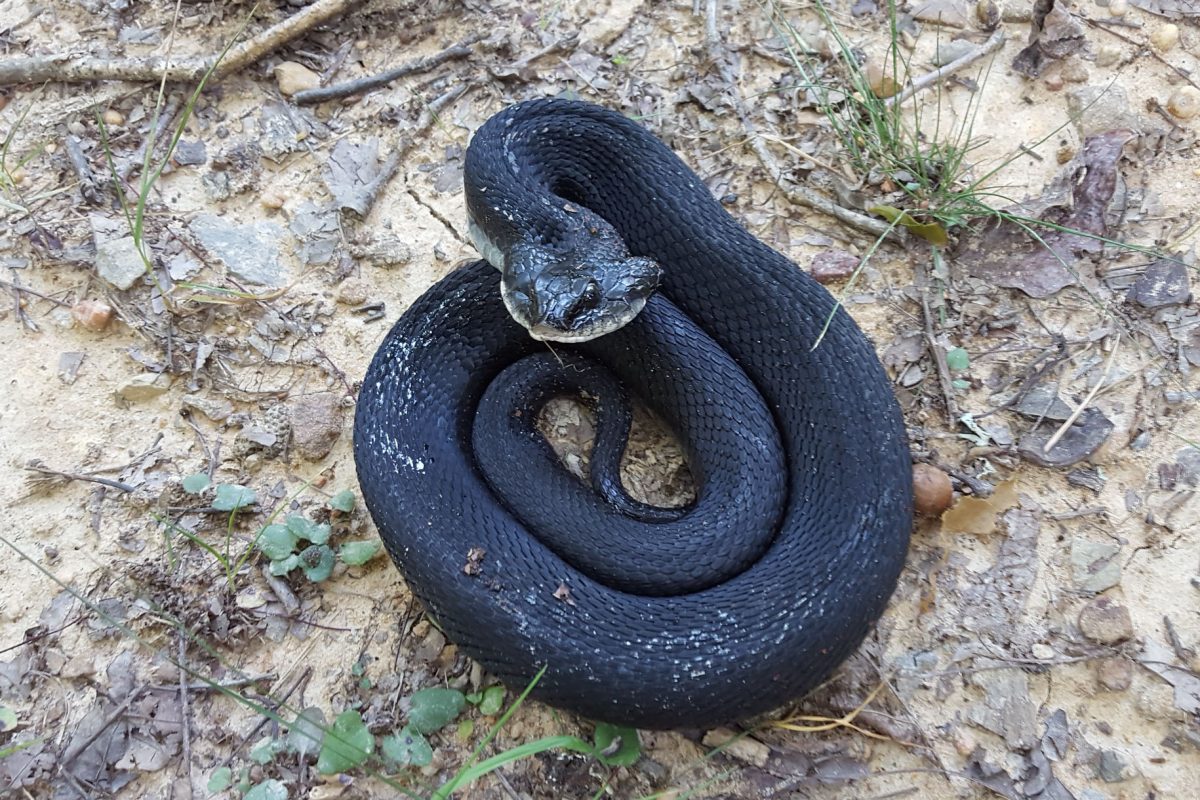
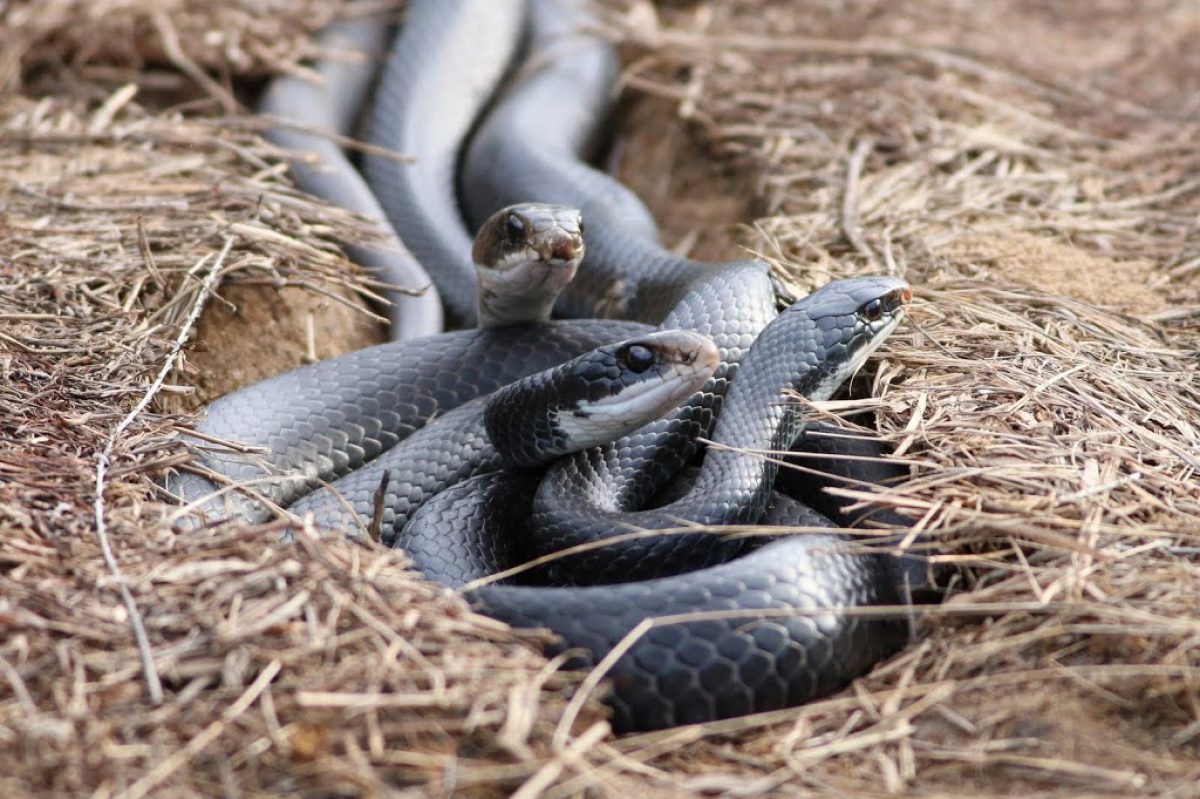
Left: Hognose Snake (Heterodon platyrhinos). Right: Eastern Racers (Coluber constrictor). Photos by Curator of Forests Kevin Calhoon.
Snakes play a vital role in our ecosystem
Though you may never realize it, snakes play a vital role in maintaining a balanced ecosystem, especially in a rich and biologically diverse region like the Southeast.
Snakes prey upon rodents – including mice, rats, chipmunks, moles and squirrels – and act as a natural check on populations of these animals, which often are considered nuisances or pests. Their role in rodent control is crucial, especially around agriculture, where outsized populations of mice and rats can threaten grain stores and spread disease.
Depending on the species, snakes will also consume slugs, insects, amphibians, lizards and even other snakes. King Snakes are well known for preying on venomous snakes, and they’re regarded as highly desirable snakes to have around by those who know them well.
Snakes also serve as an essential food item for predators. Wading birds such as Snowy Egrets and Great Blue Herons consume snakes, and Banded Watersnakes are the only prey item consumed by Black-crowned Night Herons. Birds of prey like Red-tailed Hawks and Red-shouldered Hawks consume snakes, and the Broad-winged Hawk is nicknamed the “snake hawk.”
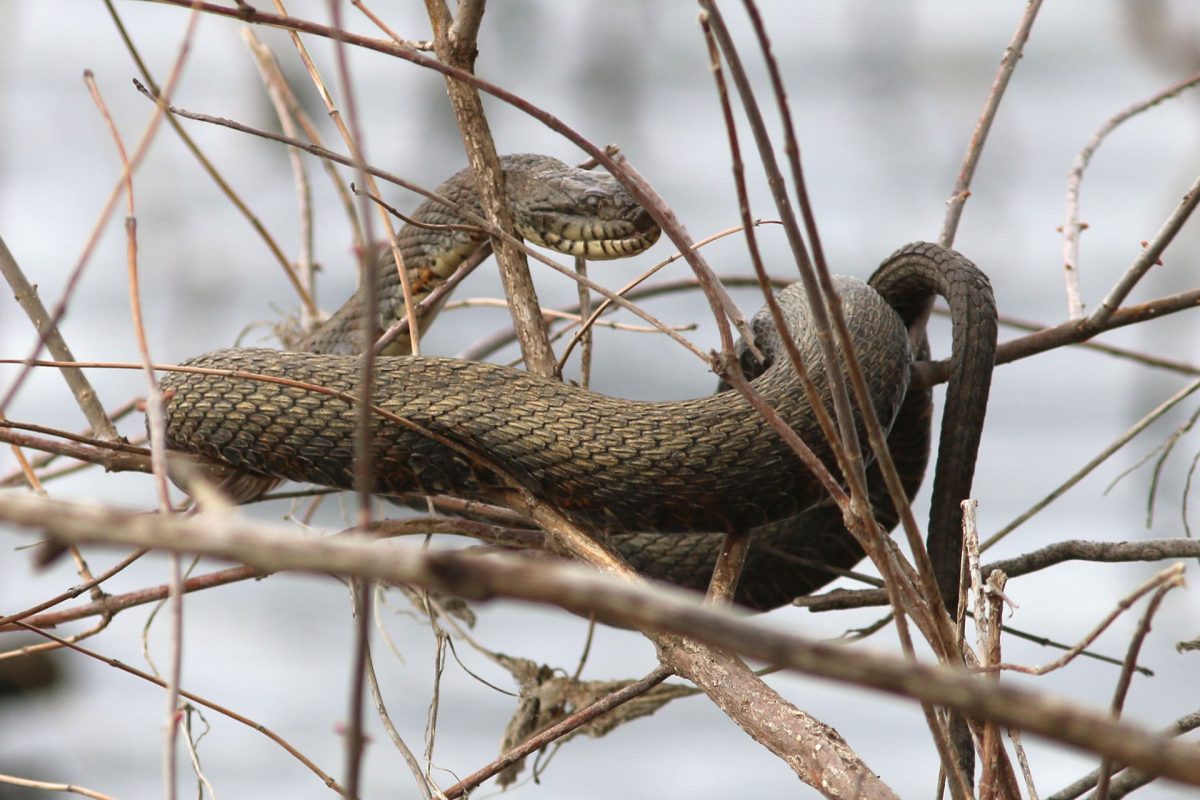
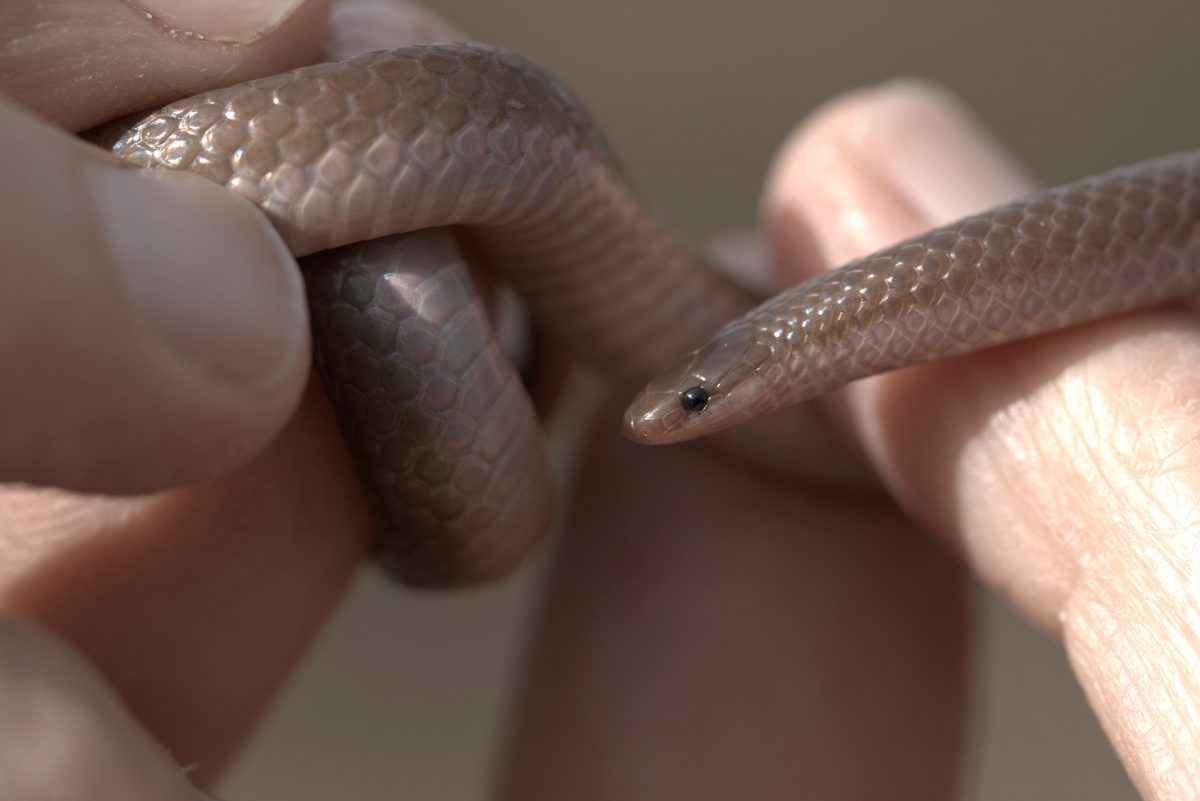
Left: Northern Watersnake (Nerodia sipedon). Right: Worm Snake (Carphophis amoenus). Photos by Curator of Forests Kevin Calhoon.
Learning to love snakes
Snakes weren’t always a welcome sight for Community Engagement Educator Shawn Brim, whose work with the Aquarium’s education department involves handling many different reptiles – including snakes – while educating school children and members of the public about their ecology.
“I was very hesitant when I first started,” Brim says. “I had a lot of misconceptions about snakes, and I grew up being taught that snakes were scary.”
Though he initially was uneasy around snakes, Brim quickly discovered that he had little to fear – and a lot to learn – from snakes as he spent more time around them.
“Researching, listening to stories from people and building a relationship with snakes on my own showed me that these snakes are cool,” Brim says.
After learning about what to do when he encounters a snake in the wild and the differences between venomous and non-venomous snakes, his fears gradually subsided.
“I’m a lot better when I meet new snakes,” he adds. “And of course, I love the snakes we have here at the Aquarium.”
For others who may have fears of snakes, Brim suggests that they learn about the snakes living in their area to better understand them and their role in their ecosystem.
A Northern Watersnake (Nerodia sipedon) navigates a stream in search of food.
